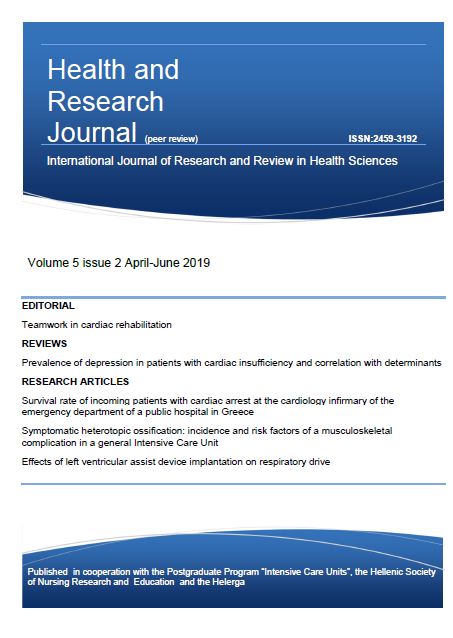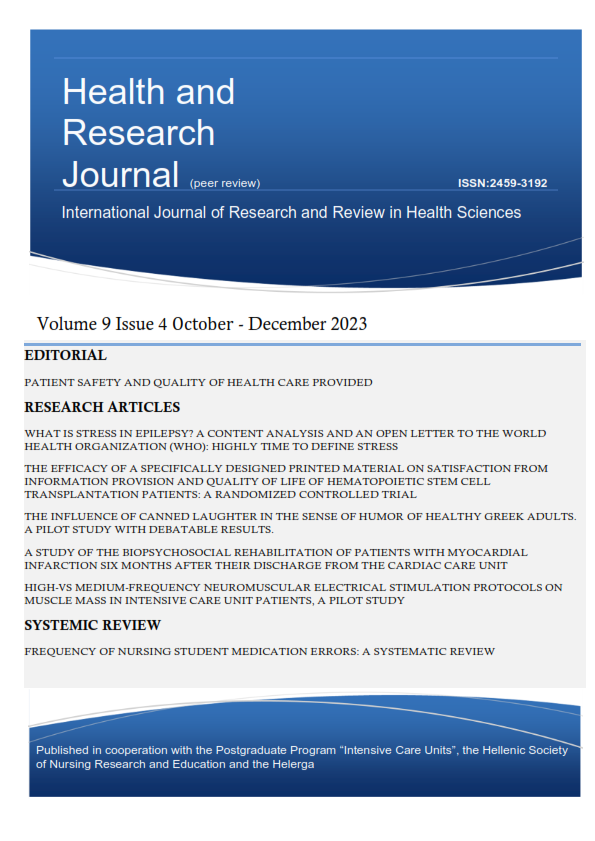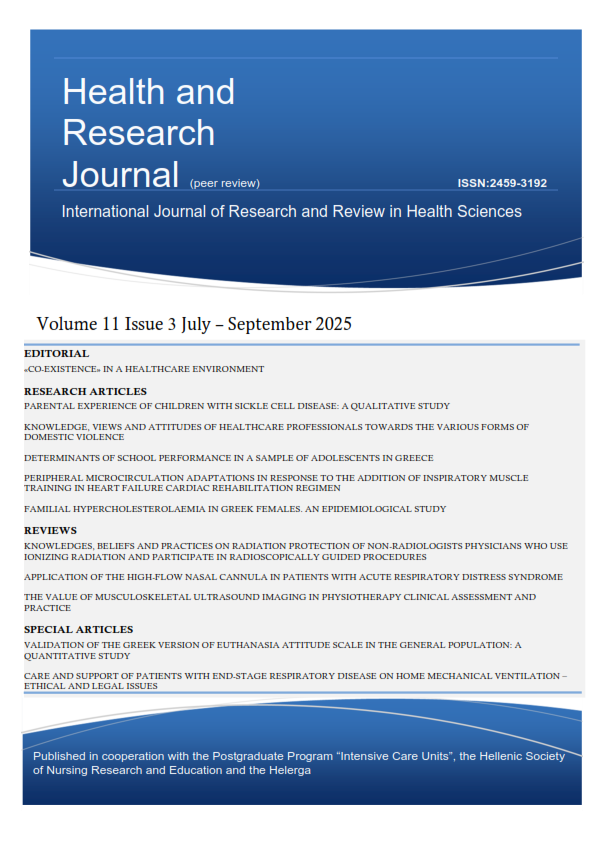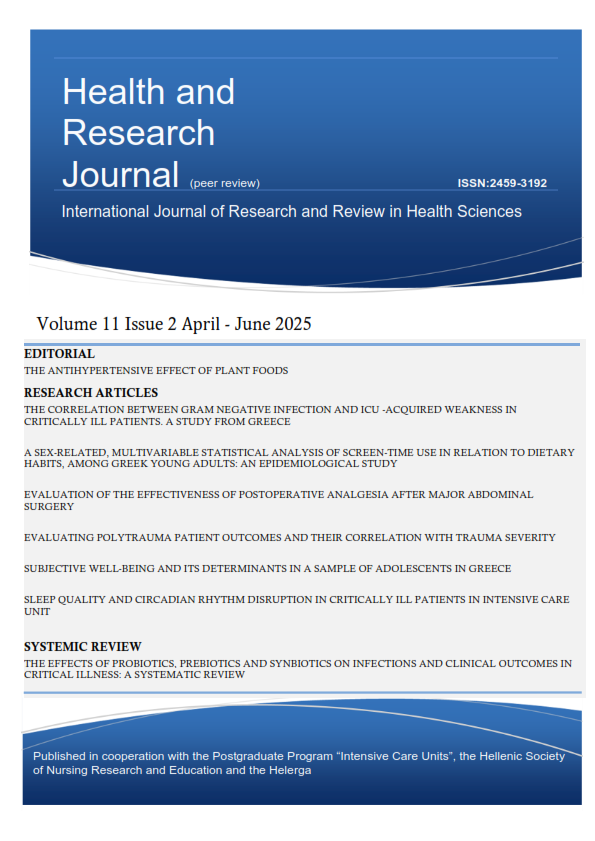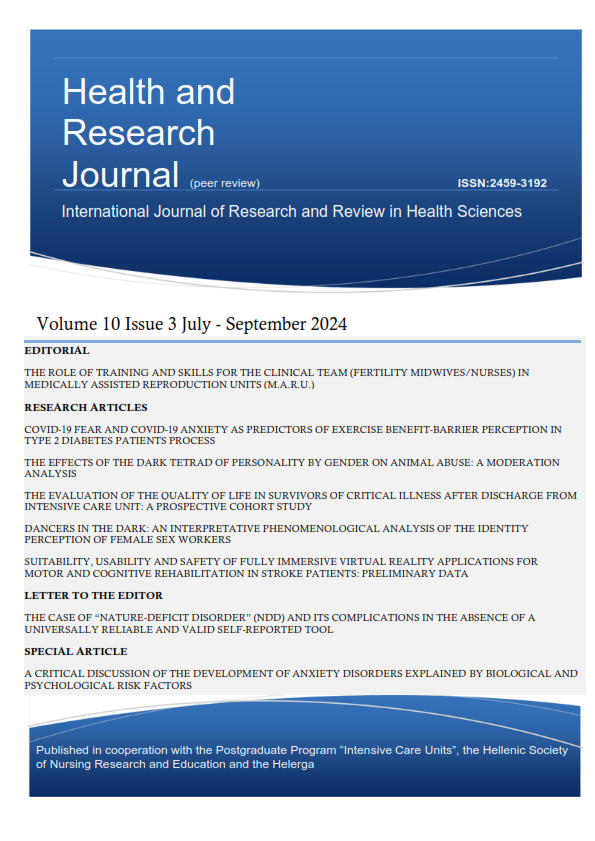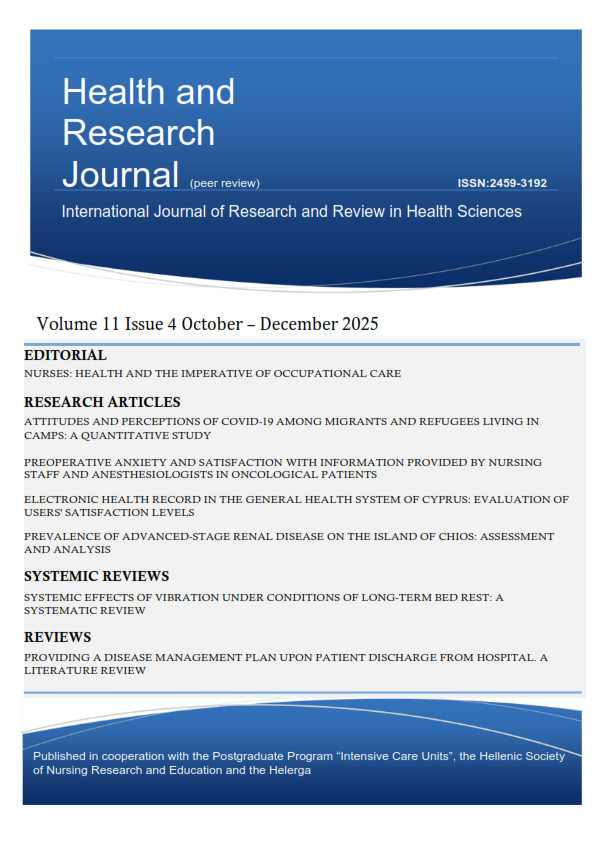The acute effect of respiratory muscle training on microcirculation in patients with chronic heart failure
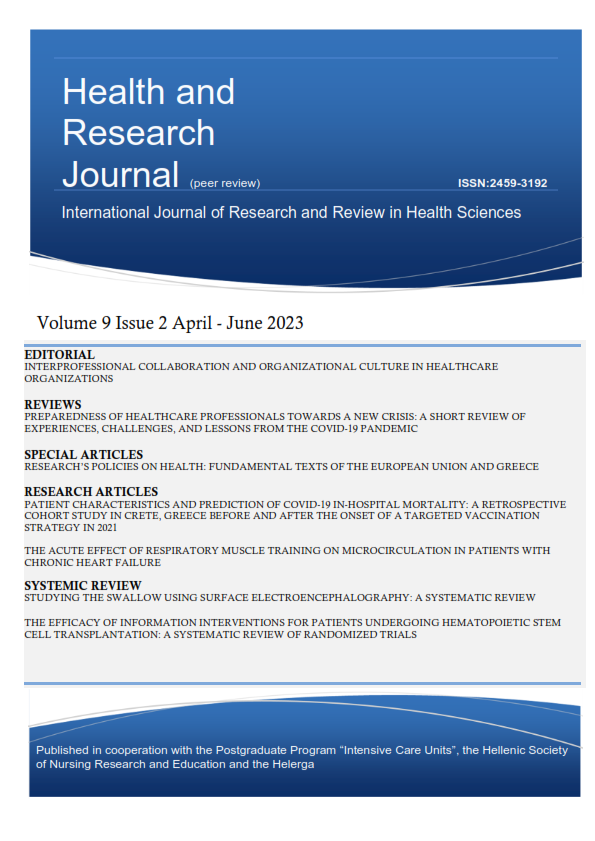
Abstract
Background: Patients with chronic heart failure (CHF) present microcirculation alterations and vascular endothelial dysfunction. Exercise training programs have been shown to improve the functional status of these patients, however less is known yet about the acute systemic effect of exercise on peripheral muscle microcirculation. The aim of the present study was to investigate the acute effect of a respiratory muscle exercise bout on the microcirculation of non-exercising muscles (systemic effect).
Materials and Methods: Thirty-four (30♂/4♀) stable CHF patients, with a mean age of61.4±9.2 years, ejection fraction (EF): 33.9±7.8%, maximal inspiratory pressure (MIP): 78.2±27.1 cmH2O, VO2max: 17.5±4.05 ml/kg/min, VE/VCO2 slope: 32.7±6.4 and a New York Heart Association classification (NYHA) ≥ ΙΙ participated in the study. Microcirculatory assessment was performed at rest and immediately after the respiratory exercise program (5 sets/10 repetitions, training load: 60% of MIP). Basal tissue oxygen saturation (StO2),oxygen consumption rate (OCR) and reperfusion rate (RR) were measured utilizing near-infrared spectroscopy(NIRS) at the thenar muscle along with the vascular occlusion test (VOT).
Results: RR (%/min), following the release of vascular occlusion, as well as OCR (%/min) increased after the respiratory exercise program (from 3.4±1.6 to 3.9±1.7, p=0.007, and from 12.7±3.8 to 13.2±3.9, p=0.021 respectively), whereas the corresponding basal StO2values difference did not reach the level of statistical significance (from 85.5±6.4. to 84.7±6.2, p=0.065).
Conclusions: In the present study, concerning patients with CHF, after an acute respiratory exercise bout, dynamic microcirculatory indices assessed by NIRS in peripheral, non-exercising muscles, were significantly altered.
Article Details
- How to Cite
-
Katsoula, C., Karatzanos, E., Rovina, N., Routsi, C., Vasileiou, I., Papadopoulou, E., Briasoulis, A., Nanas, S., & Vasileiadis, I. (2023). The acute effect of respiratory muscle training on microcirculation in patients with chronic heart failure. Health & Research Journal, 9(2), 96–103. https://doi.org/10.12681/healthresj.32631
- Section
- Original Articles
Copyright notice:
The journal "Health and Research Journal" reserves the rights for copyright of the content of the website and also the copyright of the articles published.
By virtue of their appearance in this journal, the articles are free to be used for non-commercial purposes. However, the articles cannot and must not be used in anyway, published elsewhere or modified without any reference to the author and the first publication of the article.



